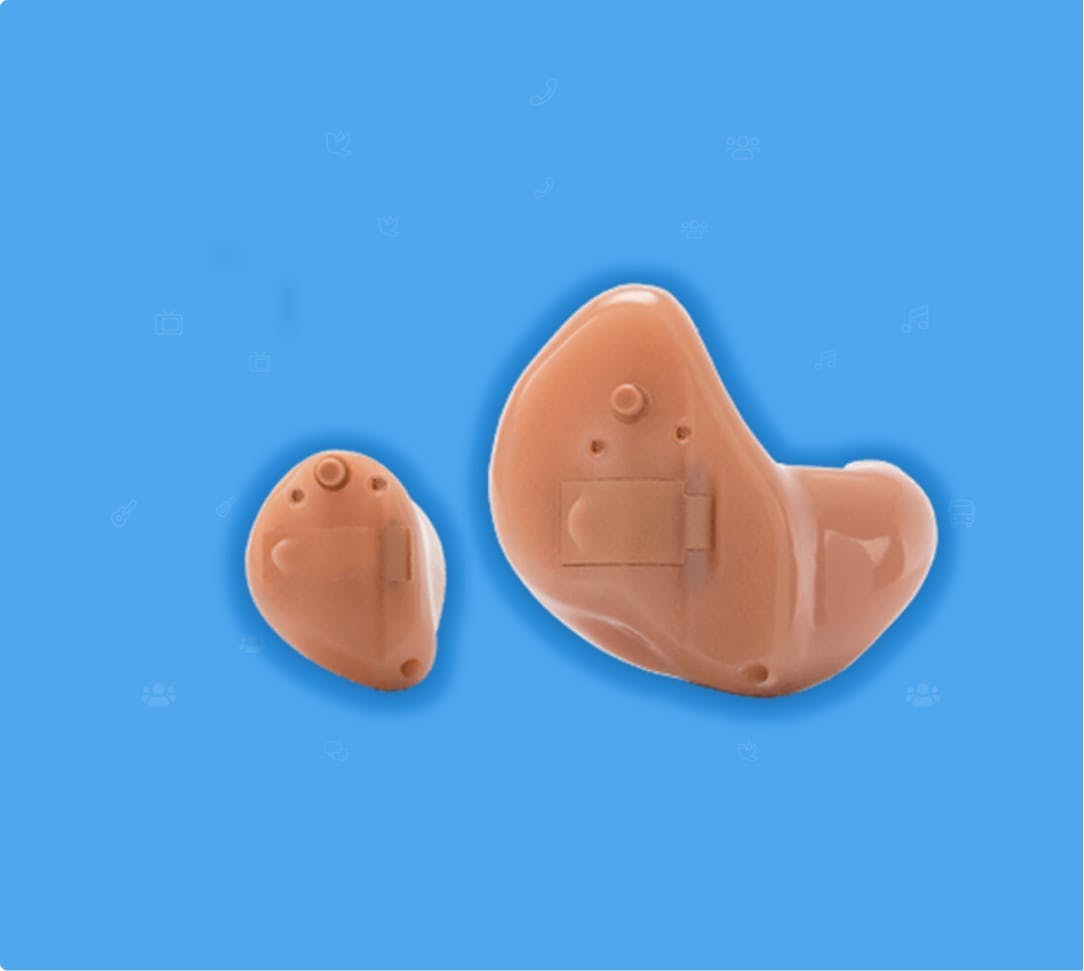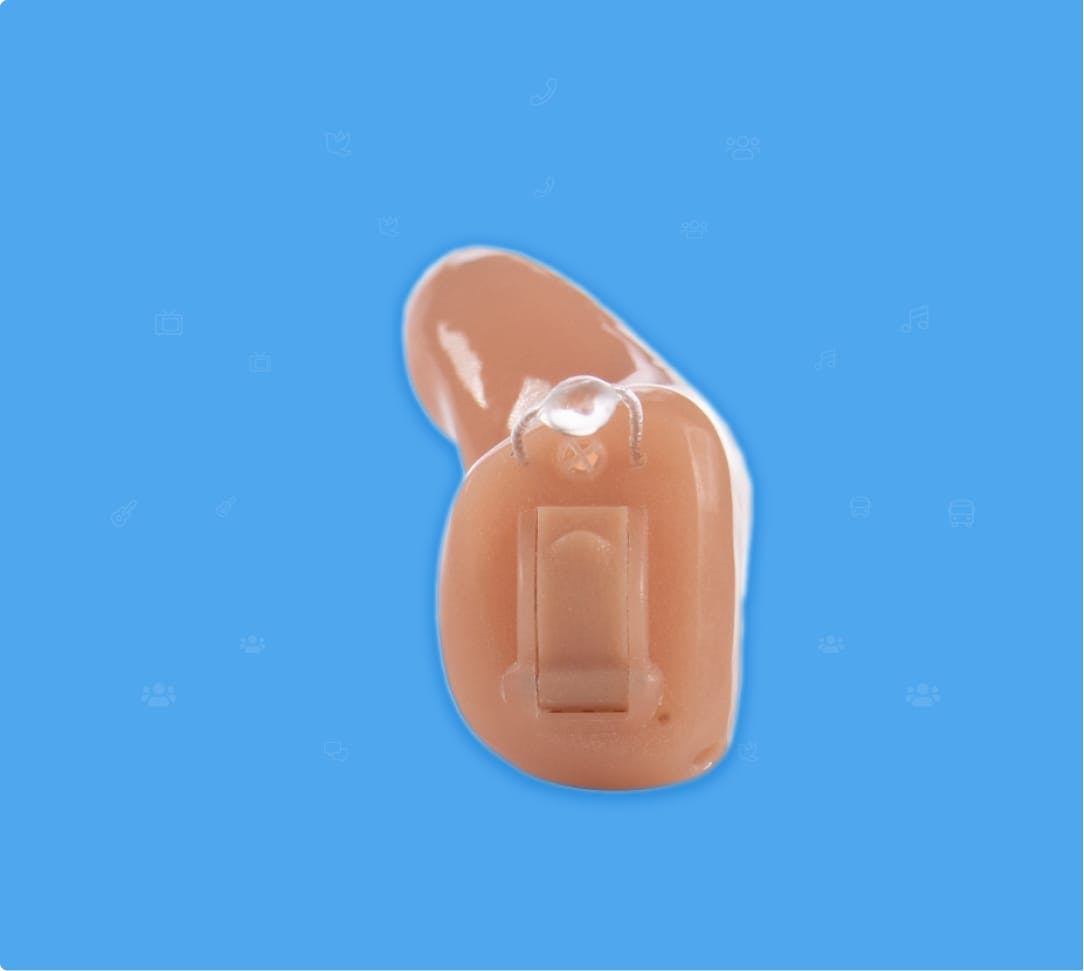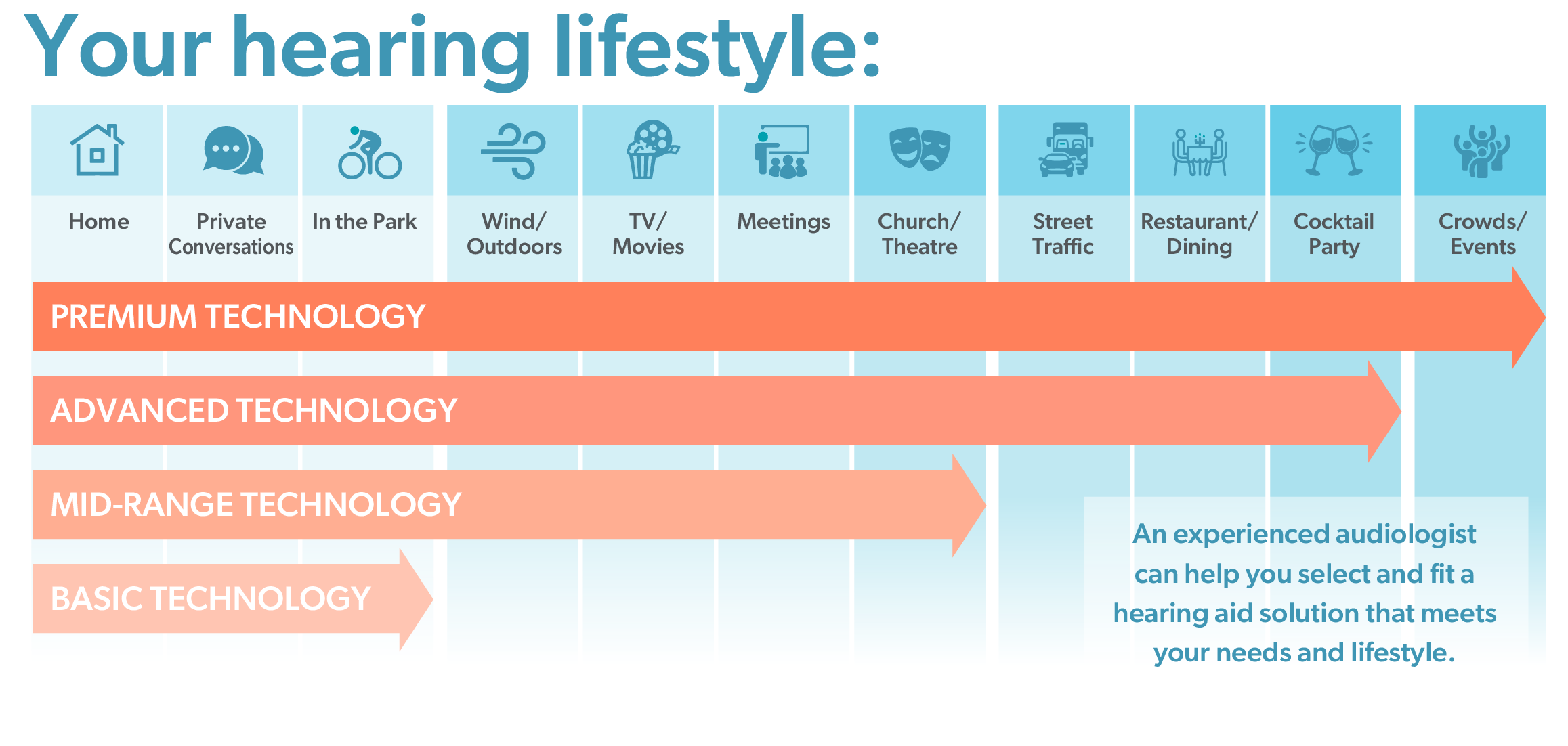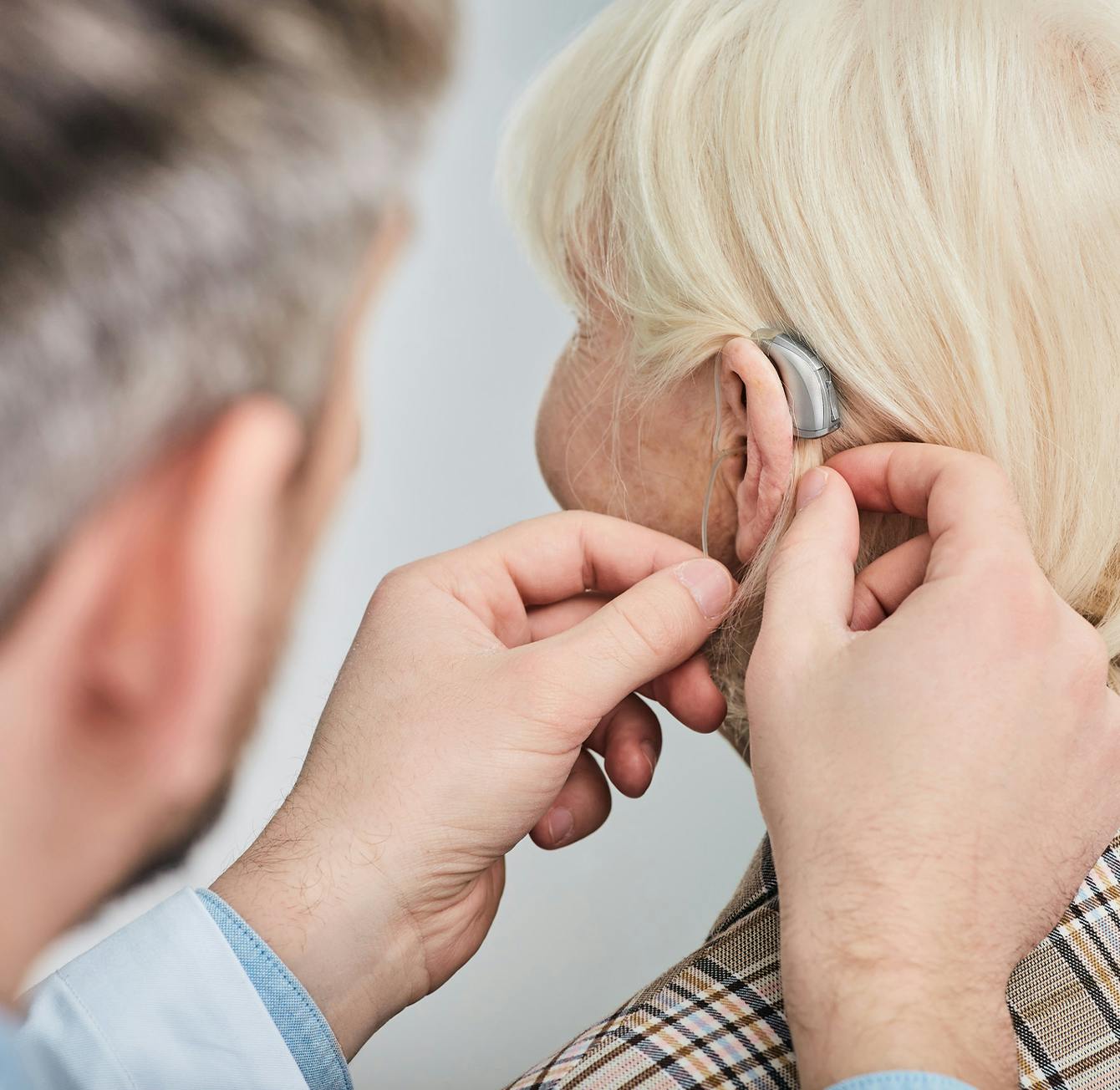If your audiologist recommends a hearing aid to improve your ability to communicate, we’ll walk you through selecting a device, getting the device properly fitted, and preparing for the lifestyle change.
Hearing Aid Features
- Extra noise and wind noise reduction
- Directional microphones to improve your hearing when there’s background noise
- Rechargeable batteries so you don’t have to regularly change the battery
- Wireless connectivity so you can interact with your cellphone, computer, TV, and more
- Remote controls so you can adjust your features without touching your hearing aid
- Direct audio input so you can plug in from a compatible device with a cord
- Preprogrammed settings for different environments
- Synchronization so you can program two hearing aids simultaneously








